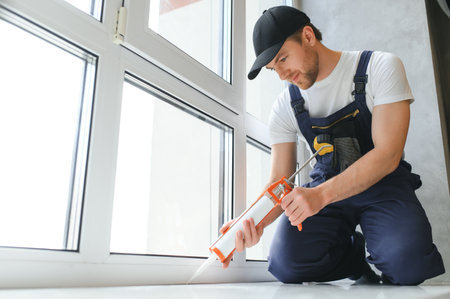Understanding Smart Home Security Essentials
Creating a fully integrated home security system starts with understanding the basic components that work together to keep your home safe. With smart technology becoming more accessible, platforms like Amazon Alexa and Google Home can now act as the central hub for managing your entire security setup.
Core Components of a Smart Home Security System
Before you dive into integration, it’s important to know what makes up a complete smart security system. Here are the most common devices:
| Device | Function | Smart Integration |
|---|---|---|
| Smart Cameras | Monitor indoor and outdoor activity in real time | Can be viewed or controlled via voice commands or mobile apps |
| Door/Window Sensors | Alert you when doors or windows are opened unexpectedly | Send notifications through Alexa or Google Home routines |
| Motion Detectors | Detect movement in designated areas | Trigger alerts or actions like turning on lights |
| Smart Locks | Secure entry points with remote control access | Lock/unlock via voice command or automation schedules |
| Video Doorbells | Allow visual and audio interaction with visitors at your door | Can stream video directly to smart displays like Echo Show or Nest Hub |
| Security Alarms/Sirens | Deter intruders with loud alarms and send emergency alerts | Trigger based on sensor data managed by your smart assistant |
The Role of Alexa and Google Home in Your Security Setup
Your voice assistant is more than just a way to play music or check the weather—it can be the brain of your home security system. Both Alexa and Google Home offer features that allow you to control, automate, and monitor your devices from one place.
How They Work:
- Device Compatibility: Many popular brands like Ring, Arlo, Nest, and August are designed to work seamlessly with Alexa or Google Assistant.
- Routines & Automations: Set up custom routines like “Goodnight” to lock doors, turn off lights, and arm your security system with a single voice command.
- Voice Control: Use simple phrases like “Alexa, show me the front door” or “Hey Google, is the back door locked?” for instant updates.
- Mobile App Integration: Manage everything remotely using the Alexa or Google Home app—perfect for checking in while youre away.
A Centralized Approach to Peace of Mind
A modern home security system isn’t just about having cameras—it’s about connecting all parts of your home into one easy-to-manage platform. With Alexa or Google Home at the center, you can create a smarter, safer space without needing to juggle multiple apps or systems.
Up Next:
In the next section, we’ll walk through how to choose compatible devices and set them up for seamless integration with your preferred smart assistant.
2. Choosing Compatible Devices for Your Ecosystem
When building a fully integrated home security system with Alexa or Google Home, one of the most important steps is selecting smart devices that are fully compatible with your chosen voice assistant. This ensures seamless communication and smooth operation across all your connected devices.
Why Compatibility Matters
Not all smart home devices work equally well with both Alexa and Google Home. Choosing compatible products helps avoid connectivity issues, lag, or limited functionality. Whether youre locking your door, checking live camera feeds, or arming your security system, everything should respond reliably through voice commands or app controls.
Types of Devices to Include
A complete home security setup typically includes:
- Smart locks
- Security cameras (indoor and outdoor)
- Motion sensors
- Door/window contact sensors
- Alarms and sirens
Top Compatible Devices for Alexa and Google Home
The table below highlights popular smart security devices that are known for their compatibility with Alexa and Google Home ecosystems:
| Device Type | Brand/Model | Works with Alexa | Works with Google Home |
|---|---|---|---|
| Smart Lock | August Wi-Fi Smart Lock | ✔️ | ✔️ |
| Schlage Encode Smart WiFi Deadbolt | ✔️ | ✔️ | |
| Cameras | Ring Indoor/Outdoor Cameras | ✔️ | No* |
| Google Nest Cam (Indoor/Outdoor) | No* | ✔️ | |
| Sensors | Samsung SmartThings Sensors | ✔️ (via SmartThings) | ✔️ (via SmartThings) |
| Aqara Motion Sensor P1 | ✔️ (via Hub) | ✔️ (via Hub) | |
| Siren/Alarm Systems | Ring Alarm Security Kit | ✔️ | No* |
| Abode Security System | ✔️ | ✔️ |
*Some features may be limited or require third-party integrations.
Tips for Device Selection
- Select a Primary Ecosystem: Decide early whether you’ll use Alexa or Google Home as your main platform.
- Avoid Brand Mixing: Try to stay within one brand or ecosystem when possible to ensure better compatibility.
- Check “Works With” Labels: Look for “Works with Alexa” or “Works with Google Assistant” badges on product packaging or listings.
- Add a Smart Hub if Needed: Some devices (like Zigbee/Z-Wave sensors) require a hub like SmartThings for integration.
Selecting the right devices upfront will save you time and frustration later. In the next section, we’ll look at how to connect and set up these devices within your chosen ecosystem to create a smooth and responsive home security experience.
![]()
3. Setting Up and Connecting Your Devices
Once youve chosen the right devices for your smart home security system, its time to get everything connected and working together with Alexa or Google Home. Follow these simple steps to configure your devices, sync them with your smart assistant, and start building automations that make your home safer and smarter.
Step 1: Set Up Devices Using Their Native Apps
Before integrating anything with Alexa or Google Home, you need to set up each device using its own manufacturer’s app. This ensures the device is properly connected to Wi-Fi and updated with the latest firmware.
Common Setup Apps by Device Type
| Device Type | Popular Brands | Native App |
|---|---|---|
| Smart Cameras | Ring, Arlo, Nest | Ring App, Arlo App, Google Home App |
| Smart Door Locks | August, Schlage | August App, Schlage Home |
| Motion Sensors | Eufy, Aqara | Eufy Security App, Aqara Home |
| Smart Lights | Philips Hue, LIFX | Hue App, LIFX App |
Step 2: Connect Devices to Alexa or Google Home
After setting up your devices in their respective apps, its time to link them to your preferred voice assistant. Here’s how:
For Alexa:
- Open the Alexa app on your smartphone.
- Tap “Devices” at the bottom menu bar.
- Select “+” then tap “Add Device.”
- Choose your device type and brand from the list.
- Follow the prompts to sign in and authorize access.
For Google Home:
- Open the Google Home app.
- Tap the “+” icon at the top left.
- Select “Set up device,” then “Works with Google.”
- Search for the brand of your device and tap it.
- Sign in to link your account and grant permissions.
Step 3: Create Basic Automations (Routines)
You can now start creating automations—also known as routines—to make your system work more efficiently. For example, you might want a routine that turns on all outdoor lights when motion is detected at night.
Create a Routine in Alexa:
- Open the Alexa app and go to “More” > “Routines.”
- Tap the “+” icon to create a new routine.
- Name your routine (e.g., “Night Motion Alert”).
- Add a trigger (e.g., motion detected by Ring camera).
- Add actions (e.g., turn on porch light, send phone notification).
- Select which Echo device will respond (if needed), then save.
Create a Routine in Google Home:
- Open the Google Home app and tap “Routines.”
- Select “New” or customize an existing one.
- Add a starter (e.g., motion detected).
- Add actions (e.g., broadcast message, turn on lights).
- Name your routine and save it.
Example Routine Ideas:
| Name | Trigger | Actions |
|---|---|---|
| Away Mode | You say “Alexa, I’m leaving” | Lock doors, arm security system, turn off lights |
| Night Security Check | 10 PM every night | Status check on locks and cameras; alert if anything is open or offline |
| Motion Alert Light On | Cameras detect motion after sunset | Turn on outdoor lights for safety; send phone alert |
This setup process brings your devices together into a seamless system where they can work collaboratively through Alexa or Google Home. With everything connected and basic routines in place, youre well on your way to having a smarter—and safer—home environment.
4. Creating Custom Routines and Voice Commands
One of the most powerful features of using Alexa or Google Home in your home security setup is the ability to create custom routines and voice commands. These allow you to automate tasks, streamline responses, and make managing your home’s safety more convenient and efficient.
Using the Alexa App
The Alexa app lets you build personalized routines that can trigger multiple actions with a single command or at a scheduled time. For example, you can say, “Alexa, I’m leaving,” and have it arm your security system, turn off lights, lock doors, and lower the thermostat.
Steps to Create a Routine in Alexa:
- Open the Alexa app on your smartphone.
- Tap on “More” at the bottom right corner.
- Select “Routines.”
- Tap the “+” icon to create a new routine.
- Set a name for your routine (e.g., “Arm Security”).
- Choose a trigger (like voice command or schedule).
- Add actions such as “Smart Home,” “Music,” “Wait,” or “Alexa Says.”
- Save your routine.
Example Alexa Routine
| Trigger | Action |
|---|---|
| “Alexa, Im leaving” | – Arm Ring Alarm – Turn off all lights – Lock smart door locks – Adjust thermostat to eco mode |
Using the Google Home App
Google Home offers similar functionality through its Routines feature. You can use it to automate tasks like arming Nest Secure, turning off smart plugs, or even sending yourself reminders if motion is detected while youre away.
Steps to Create a Routine in Google Home:
- Open the Google Home app.
- Tap on “Routines.”
- Select “+ New” to create a new routine.
- Name your routine (e.g., “Night Security”).
- Add starter triggers (like voice command or specific time).
- Add actions such as controlling devices, adjusting media volume, or sending alerts.
- Save your routine.
Example Google Routine
| Trigger | Action |
|---|---|
| “Hey Google, goodnight” | – Arm Nest Secure – Turn off living room lights – Lock front door – Set phone to Do Not Disturb |
Pro Tips for Effective Routines
- Use clear and simple voice commands so everyone in the family can remember them easily.
- Create different routines for different situations: bedtime, leaving home, vacation mode, etc.
- You can include notifications in routines to alert you via smartphone when certain events happen—like when someone disarms the system or opens a door late at night.
By customizing routines and voice commands in either Alexa or Google Home, you gain more control over your home security system—making it smarter and more responsive to your lifestyle.
5. Ensuring Reliability and Data Security
When building a fully integrated home security system with Alexa or Google Home, its essential to make sure your network is secure and your smart devices are protected from cyber threats. A vulnerable system can be an easy target for hackers, which could put your personal safety and privacy at risk. Here are some best practices to help you keep your smart home reliable and secure.
Secure Your Wi-Fi Network
Your Wi-Fi network is the foundation of your smart home setup. If its not properly secured, it becomes a weak link in your entire security system.
Wi-Fi Security Tips
| Best Practice | Description |
|---|---|
| Use WPA3 Encryption | Make sure your router supports WPA3 encryption, the latest and most secure Wi-Fi protocol. |
| Create a Strong Password | Avoid using default or simple passwords. Use a mix of letters, numbers, and special characters. |
| Set Up a Guest Network | Keep smart devices on a separate guest network to limit access if one device gets compromised. |
Keep Firmware Updated
Manufacturers often release firmware updates to fix bugs or patch security vulnerabilities. Keeping all your smart home devices up to date ensures they’re protected against known threats.
How to Stay Updated
- Enable automatic updates whenever possible.
- If auto-updates arent available, set a reminder to check for updates monthly.
- Visit the manufacturer’s website or use their app to manually update firmware.
User Access Control
Your Alexa or Google Home system may be accessed by multiple users in your household. Managing who has access — and what kind of access — is key to keeping control over your home security system.
User Management Tips
- Create individual user profiles with appropriate permissions.
- Avoid sharing your main account credentials with others.
- If using voice recognition features, train your assistant to recognize different household members’ voices for personalized responses and added security.
Add Two-Factor Authentication (2FA)
If your Alexa or Google account supports it, turn on two-factor authentication. This adds an extra layer of protection by requiring a code sent to your phone or email in addition to your password when logging in.
This simple step can prevent unauthorized access even if someone manages to steal your login credentials.
Simplifying your smart home experience doesn’t mean compromising on safety. By taking these precautions, you can enjoy the convenience of a fully integrated home security system while keeping your data and family safe.


